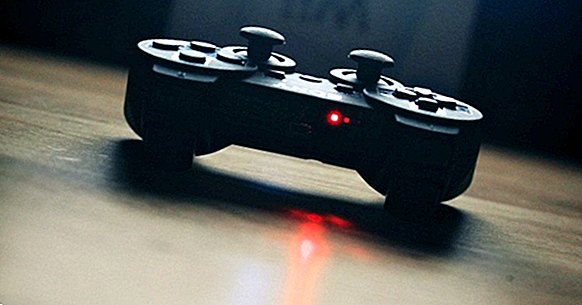Do Brain Training video games really work?
Nowadays, the videogame industry enjoys an unprecedented power of seduction. Whereas twenty years ago its target audience consisted of children (in males) and young men, today they are used by entire families, women and even people over 60 years of age.
Although the factors that have intervened in this expansion of niche markets would lead to another separate article, there is at least one principle that can be understood as a cause and at the same time a consequence of this opening towards the diversity of publics: the response of this market to the concern for physical and psychological well-being , in general terms.
Video Games Brain Training
This new philosophy can be summarized as: since videogames are going to form an important part of our lives, that at least serve to improve them. If before playing the video game console was equivalent to abstracting from reality, in recent years the wall that separated the use of video games and "real life" has been falling apart. This way of thinking has led to the emergence of numerous video games of the type "mental gym" that offer us the possibility of playing while we improve the cognitive processes that we are essential in our daily life (such as the speed at which to discriminate between stimuli, working with several variables at the same time in the resolution of a problem or our ability to focus on a attentional focus and not distract us).
Brain training, more than a Nintendo brand, has become almost a genre of video games. It is no coincidence that the popularization of brain training video games has coincided with the emergence of the Wii and Nintendo DS video game consoles during the 2000s, both being the main responsible for the opening of the videogame market towards a profile of potential customers much more varied.
The customer is the whole world
In the year 2006, the best-selling video game Brain Training in Europe appeared in Europe. Dr. Kawashima for Nintendo DS . It can be considered something like the head of the list of the series Training, a franchise created by Nintendo whose central axis was the learning and improvement of cognitive skills. Shortly after the WiiFit series appeared with a peripheral device similar to a scale that is used to practice postural and movement exercises related to yoga, aerobics and other disciplines. The reception of WiiFit by consumers was also more than positive.
The incentives of video games brain training as a tool of "mental gymnastics" for our brain are clear: the possibility of creating personalized programs in which each activity works a specific cognitive function, a quick access to this type of activities without the need to move outside of home and, of course, the fun factor. On behalf of video game development companies In addition, this type of product allows them to access a large number of clients with high purchasing power, beyond a profile of hardcore gamer that every time demands a class of videojuegos more aesthetically attractive and with greater costs of production. However, we must ask ourselves to what extent it is shown if they really work.
Skepticism
The truth is that the effectiveness of this type of video game when improving the performance of cognitive functions is more than put into question. It seems that, in general, there are few studies that attribute a better cognitive performance to the continued use of this type of videogames. In the cases in which a statistically significant tendency towards the improvement of cognitive abilities has been seen, this has been quite modest.
Among the causes that hinder the measurement of possible cognitive improvements is the fact that an improvement in performance when solving the problems posed by the video game does not have to imply an improvement in performance before the problems before which we face each other on a day to day basis. That is, the adaptation and improvement before the levels of difficulty posed by the game do not have to be generalizable to other areas of our lives: if I become faster when reacting to a gunman who appears behind some wooden barrels, this improvement may be due to that I have learned the patterns of appearance of enemies within the videogame, to that I recognize the hiding places in which statistically it is more probable that a gunman appears or simply that my levels of adrenaline are affected automatically by the simple fact of starting a game.
None of these adaptations to the video game will serve me in other situations of my daily life , and none of them involves an implementation in my brain structures that mediate the rapid reaction to stimuli and attentional selection.This happens with Nintendo's Brain Training video games as well as with the most recent Lumosity .
It seems that, however much we want to save time and strengthen our brain while we play, in a certain sense it is still true that what happens in video games stays in video games. The improvement of the performance that occurs in them is, in the best of cases, generalizable to other situations of our life in a very low degree. That is why it is normal that mental gymnastics videogames are greeted with skepticism among the scientific community.
However, maintaining a skeptical stance does not mean closing in front of the possible advantages that the use of video games can bring to basic and applied psychology. It must be borne in mind that a large part of the brain training video games that have been put to the test are not oriented towards sanitary use, but towards sales in a very wide market. Almost all of them, like Dr. Kawashima's own Brain Training, only rely on skillful Marketing campaings when talking about the many beneficial effects that your product can offer us, not in experiments designed specifically to test it. Thus, it is normal that in a posteriori studies the results are bad.
Also, the fact that different videogames work different areas of the brain with different intensity makes the comparison between studies chaotic and difficult to reach clear conclusions . All this means that, although the most that can be said of the brain training that has existed so far is that they sell a lot thanks to the exaggeration, the videogames that are to come can be good tools for the strengthening of the mental processes superiors Maybe, it's just a matter of doing things right.
Reasons for optimism
It is worth asking how it could be that, given that there is evidence that in our daily reality there are activities that enhance the good performance of our brain neocortex, these activities can not be transferred to the field of video games, a virtual environment in which almost anything imaginable can be done and with an enviable maturity in what refers to the technologies used. The potential of the videojuegos enormous and, nevertheless, all of them have a clear limitation, in major or minor measurement: like products programmed by the man that they are, they lack chaos. All of them have some designs, some playable mechanics determined and not always too varied. It is very difficult to find a video game that after eight months does not seem repetitive. If we reinforce the capacity of videogames to surprise us by presenting unexpected stimuli and tasks of different types that occur at the same time, it is very possible that our brain is pushed to the limit and therefore exercised. In this sense, Adam Gazzaley, neurologist of the University of California , San Francisco has reason to be optimistic.
In 2009, Gazzaley collaborated with videogame developer LucasArts (famous for its Monkey Island, Rogue Squadron video game series or the acclaimed Grim Fandango) In the development of NeuroRacer . This game consisted of driving a vehicle on winding roads, without leaving the track, and at the same time pay attention to a series of icons that were appearing on the screen to press the corresponding button each time one of them appeared. As time passed, in addition, these tasks became more complicated, following a curve of increasing difficulty to take the player to the limit of their possibilities. The objective of the videogame was to improve the cognitive capacity of people in advanced age or to alleviate the decline associated with age.
The idea behind the development of this video game is the following: if even in the elderly the brain has the ability to change and adapt to the demands of the environment, we present a complex environment in which you have to activate different brain functions at the same time , emulating what happens in everyday life. It will be this exercise of attending simultaneously to multiple tasks what generates more and better neuronal connections in the brain and therefore improves its condition, not the successive presentation of the same type of problems.
To test the effects of this video game on the brain, Gazzaley He divided a group of 180 participants between 60 and 85 years into three groups. Those of a group would play the video game three times a week for a month, those of the second, would play the same amount of hours to a simplified version of the game in which they would either control the vehicle or press the buttons when they saw the corresponding icon, but not both tasks at the same time, and those of the third group would not play the video game. The results in standardized tests to measure working memory and attentional management showed a significant improvement of these processes.
In addition, these results tended to be maintained over time, at least up to 6 months after the experiment without having played NeuroRacer. On the other hand, the bioelectric activity records of the participants obtained by electroencephalogram (EEG) after passing through the experiment tended to resemble those of a 20-year-old . It also showed a variation in activity measurements in the prefrontal cortex of the brain, which is the main neural mediator in the sequentialization of orderly actions aimed at a purpose, decision making and selective attention, among other things.
Since then, Gazzaley has continued to work on similar projects. Project: Evo , a video game based on NeuroRacer that appeals to other cognitive functions that were not worked in its predecessor (in addition to those already worked on in the 2009 videogame) can mean even greater advantages. In Body Brain Trainer, Gazzaley uses a camera Xbox Kinect to recognize movements and pose exercises in which physical exercise is related to mental processes, following the philosophy of embodied cognition.
However, none of the experiments that Gazzaley has carried out offers complete guarantees, since for that a sample is needed with many more participants and more time periods to experiment. It will take years before we can have authentic brain training video games that have the backing of science, and for now large investments in video games have a predilection for the profitable leisure market. Anyway, and without detracting from the potential of those previously known as "matamarcianos"In the field of neuropsychology, you could say that the benefits that video games bring us as simple entertainment or as a form of culture They are enough reason to enjoy them.



















